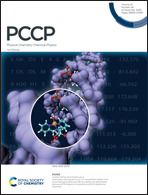Efficient suppression of the shuttle effect in Na–S batteries with an As2S3 anchoring monolayer
Abstract
Sodium–sulfur batteries (NaSBs) have emerged as a promising energy storage technology for large-scale stationary applications such as smart electrical grids due to their exceptionally high energy density and cost-effectiveness. However, one of the challenging problems impeding their practical applications is the sulfur shuttle effect by which the active redox intermediates are gradually dissolved in electrolytes. In this work, we have employed first-principles density functional theory (DFT) calculations to unravel the suppression of the shuttle effect in NaSBs with a two-dimensional (2D) As2S3 monolayer as the anchoring material. We show that semiconducting As2S3 is a suitable anchoring layer to inhibit the dissolution of the polysulfide intermediates in common electrolytes because of its stronger chemical binding with sodium polysulfides than with the electrolytes. The immense adsorption is attributed to the electron donation from the unfilled S-3p states of the polysulfides to As2S3. These mechanisms increase the carrier population and consequently improve the electrical conductivity of As2S3. Hence, the use of As2S3 can both reduce the shuttle effect and enhance the cathode electron conductivity to enable improved cycling stability and coulombic efficiency of the battery.



 Please wait while we load your content...
Please wait while we load your content...